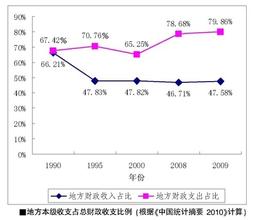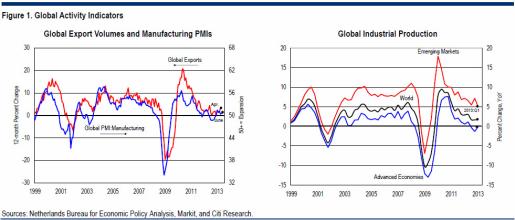放出粗略版,有时间再来整理细化。这不是我的原创成果,我只是把别人的论文里东西摘录整理给大家看。个人认为,最后的Acemoglu的结论最靠谱。
2014.03.31
------------------------------------------------
一、简介:
“不相容”学派
该学派认为,民主阻碍了经济增长,民主与经济增长是不可兼得的,尤其在不发达国家。(比如,亨廷顿:政治参与过早发展) 发展中国家快速增长需要独裁控制和压缩自由,没有一个强大的集权政府是不可能扭曲运用资源取得快速经济增长的。
“兼容”学派:
该学派认为,民主有利于经济增长,两者在发展过程中是兼容的。他们认为,民主的过程以及基本公民自由与政治权利的存在与运用,产生了最利于经济增长的社会条件。
另外,政治经济自由增强产权和市场竞争.从而也有利于促进经济增长。
“怀疑”学派
该学派认为,民主与经济发展之间根本没有系统性的关系,仅仅拥有一个民主政府对经济增长来说是无所谓的。
相反,考虑的焦点应当放到制度结构和政府发展战略,这样一些独立于政治体系的民主特征的方面。
该学派还提出,不同政治体系能够采用相同的经济政策,这表明政治体系对经济增长的影响是可以忽略的。
实证分析:
图:关于经济发展与民主关系的13项实证研究总结:
研究评价:
在13项研究中,3项发现民主对经济增长率具有负面影响,6项发现两者之间不存在任何关系,其余4项研究则得出两者之间存在有条件的关系的结论。
不仅如此,它们在度量特征、样本覆盖面、研究设计和分析方法等方面既有巨大差异义存在诸多缺陷。
所以,这样的总结出的结果并非令人满意。
二、Przeworski&Limongi(1993)
20世纪90年代另一项重要的文献回顾是由Przeworski和Limongi(1993)完成的。
该研究共回顾18项相关实证研究及其得出的21个结论,发现其中8个认为民主政体对经济增长具有正面影响,8个以为威权政体对经济增长具有正面影响,而另外5个则没有发现不同政体之间的区别。
有意思的是,1988年之前刊登的文献的11个结论中,有8个发现威权政体经济增长更快,而1987年之后刊登的文献的9个结论中没有一个支持该发现。(提示:苏联解体,东欧剧变,“历史的终结”?)
18项实证研究总结
为什么会有如此不同的结果
民主化过程为例。(亨廷顿的启示)
民主化过程基本上可以分四个阶段:
① 一是威权体制由于合法性危机或其他结构性因索、环境凶素听趋向崩溃的阶段。
② 二是狭义上的政治转型阶段.或民主制度初步建立的阶段。
③ 三是转型之后民主制度的巩同阶段。
④ 四是民主的成熟阶段。
显然.处于不同阶段的民主政体对经济增长的影响也是不同的。如果一国政权正处于危机四伏的威权崩溃阶段,或者充满动荡和不稳定的民主巩固阶段,那么,民主对经济增长必将有较大的负面影响。因此,当一项研究的国家样本中既有成熟的民主国家,也有正处于不同民主化阶段的国家,那么,我们目前的研究设计显然无法区分这些背景因素对经济的影响。(与经济学的“条件趋同”吻合)
三、Barro(1996):新的标杆
巴罗研究了民主和经济增长相互间的影响,他的研究结论被认为是这一领域的一个基准。
Barro认为。“民主对经济增长的总效应是负向的”,而且“这种影响是非线性的,民主程度比较低时,对经济增长是促进的;一旦民主达到一定程度以上之后,就会阻碍经济增长”。
(大家想想为什么?发展中国家人们的民主素质问题;发达国家讨好选民的现象/欧洲债务危机的希腊拒绝削减财政支出。。。 )
后续许多研究都和Barro得到了基本一致的结论,比如Plumper和Martin(2003)的研究也证实了民主对经济增长的这种“倒U型”影响。
四、Acemoglu(2008):大致结论 (我自己认为说的最好而已)
(MIT经济系的达龙·阿西莫格鲁(DaronAcemoglu)是当今最负盛名的经济学家之一,45岁的他,被公认为政治经济学领域的“超级天才”。)
Main idea:
This paper develops a model to analyze economic performance under different political regimes.
An “oligarchic” society, where political power is in the hands of major producers, protects their property rights but also tends to erect significant entry barriers against new entrepreneurs.
Democracy, where political power is more widely diffused, imposes redistributive taxes on producers, but tends to avoid entry barriers.
Reasons:
When taxes in democracy are high and the distortions caused by entry barriers are low, an oligarchic society achieves greater efficiency.
Because comparative advantage in entrepreneurship shifts away from the incumbents, the inefficiency created by entry barriers in oligarchy deteriorates over time. The typical pattern is one of rise and decline of oligarchic societies: An oligarchic society may first become richer, but later fall behind a similar democratic society.
Also discuss how democracies may be better able to take advantage of new technologies, and how the unequal distribution of income may keep inefficient oligarchic institutions in place. (lock-in )
Conclusion:
An oligarchic society first generates greater efficiency, because agents who are selected into entrepreneurship are often those with a comparative advantage in that sector and because oligarchy avoids the distortionary effects of redistributive taxation.
However, as time goes by and comparative advantage in entrepreneurship shifts away from the incumbents to new agents, the allocation of resources in oligarchy worsens. Contrasting with this, democracy creates distortions via the disincentive effects of taxation, but these distortions do not worsen over time.
Therefore, a possible path of development for an oligarchic society is to first rise and then fall relative to a more democratic society
参考文献:
Acemoglu D. Oligarchic versus democratic societies[J]. Journal of the European Economic Association, 2008, 6(1): 1-44.Barro R J. Democracy and growth[J]. Journal of economic growth, 1996, 1(1): 1-27.
吴晓锋. 民主促进经济增长吗?——关于民主对经济影响的实证文献述评[J]. 生产力研究, 2012 (5): 5-7.
邹俊伟, 饶茜, 杨谷川. 反思西方式民主: 转型国家民主对经济增长的实证分析[J]. 生产力研究, 2010 (4): 6-8.
1/3 1 2 3 下一页 尾页 爱华网
爱华网



